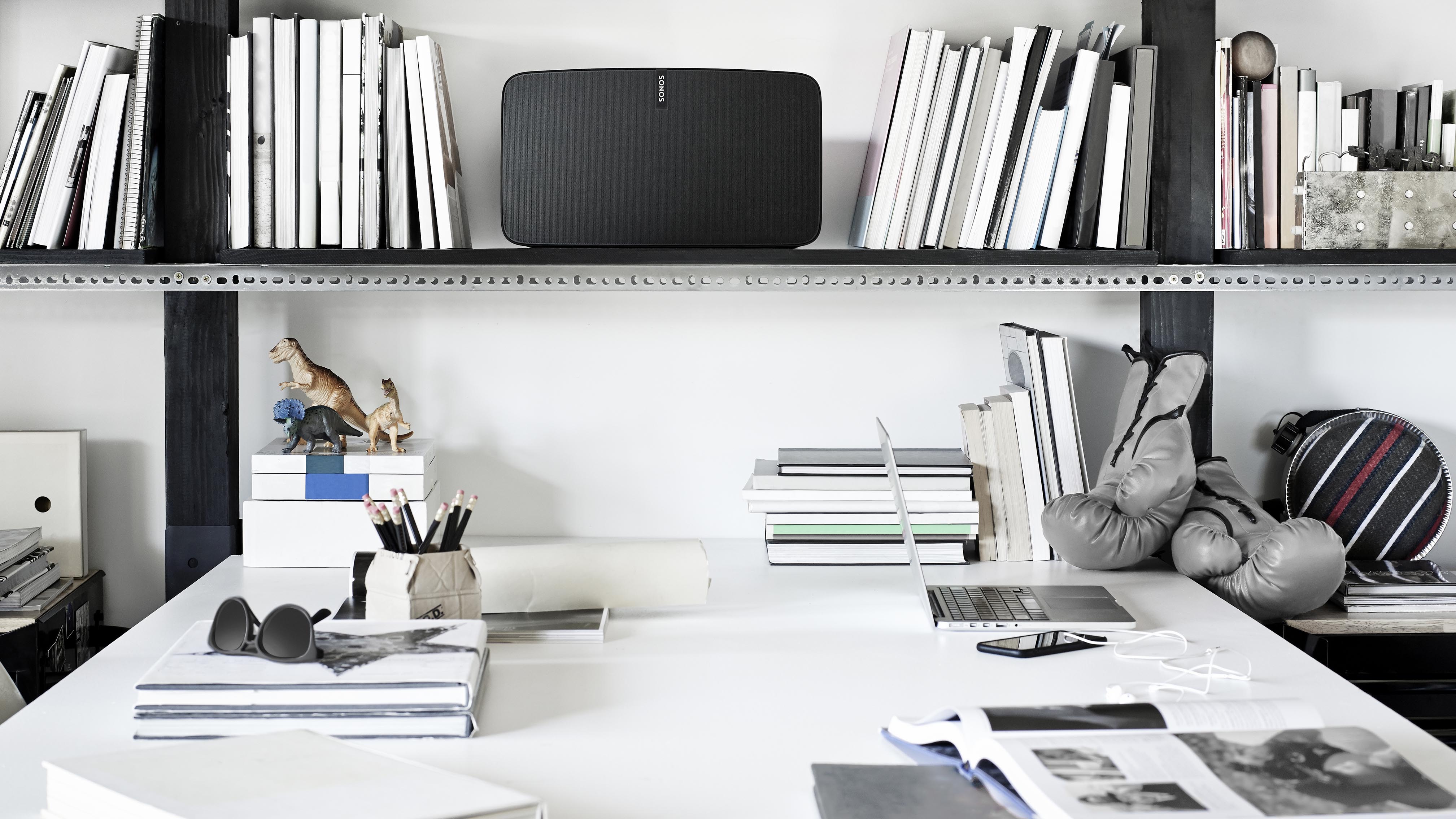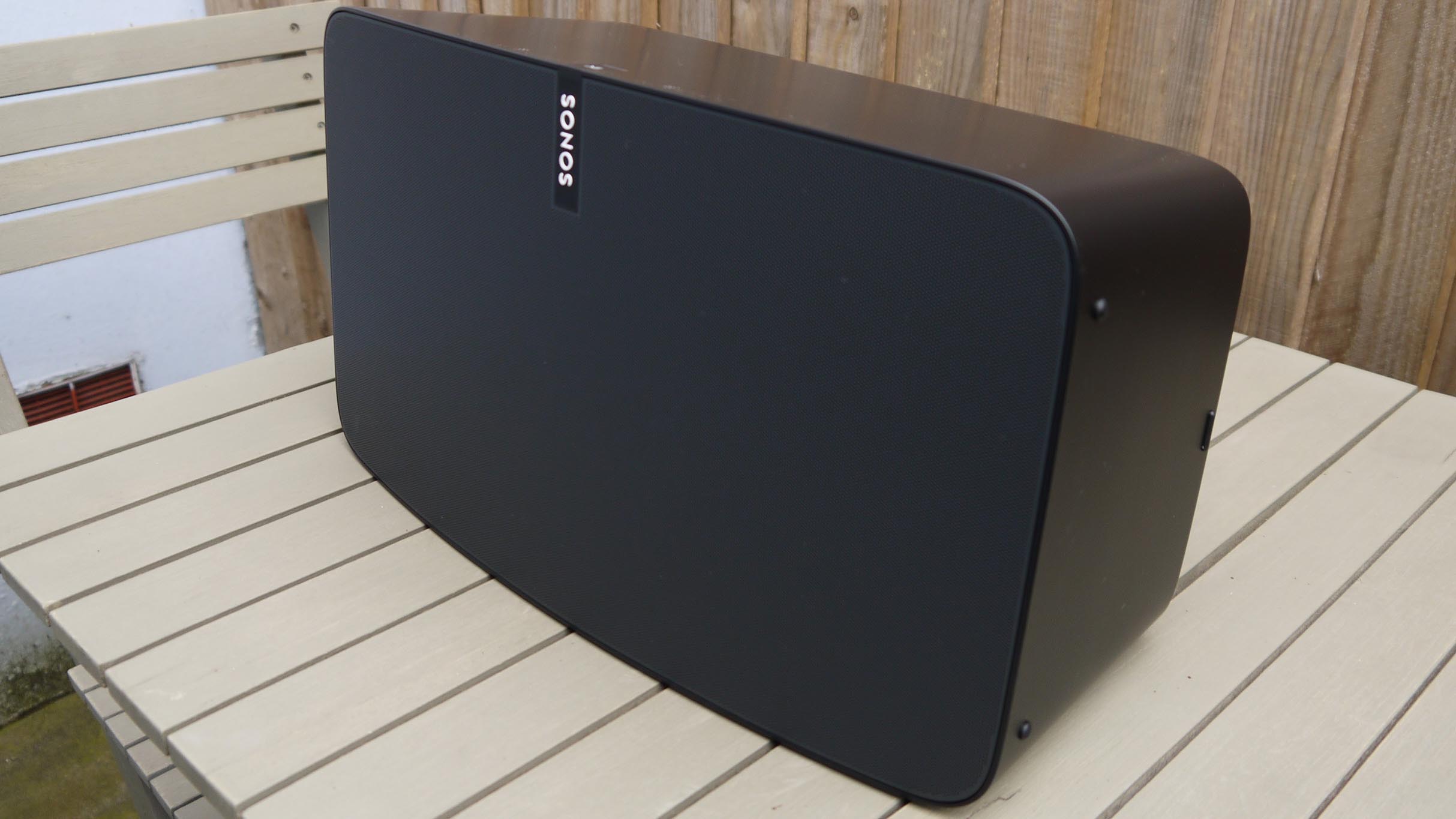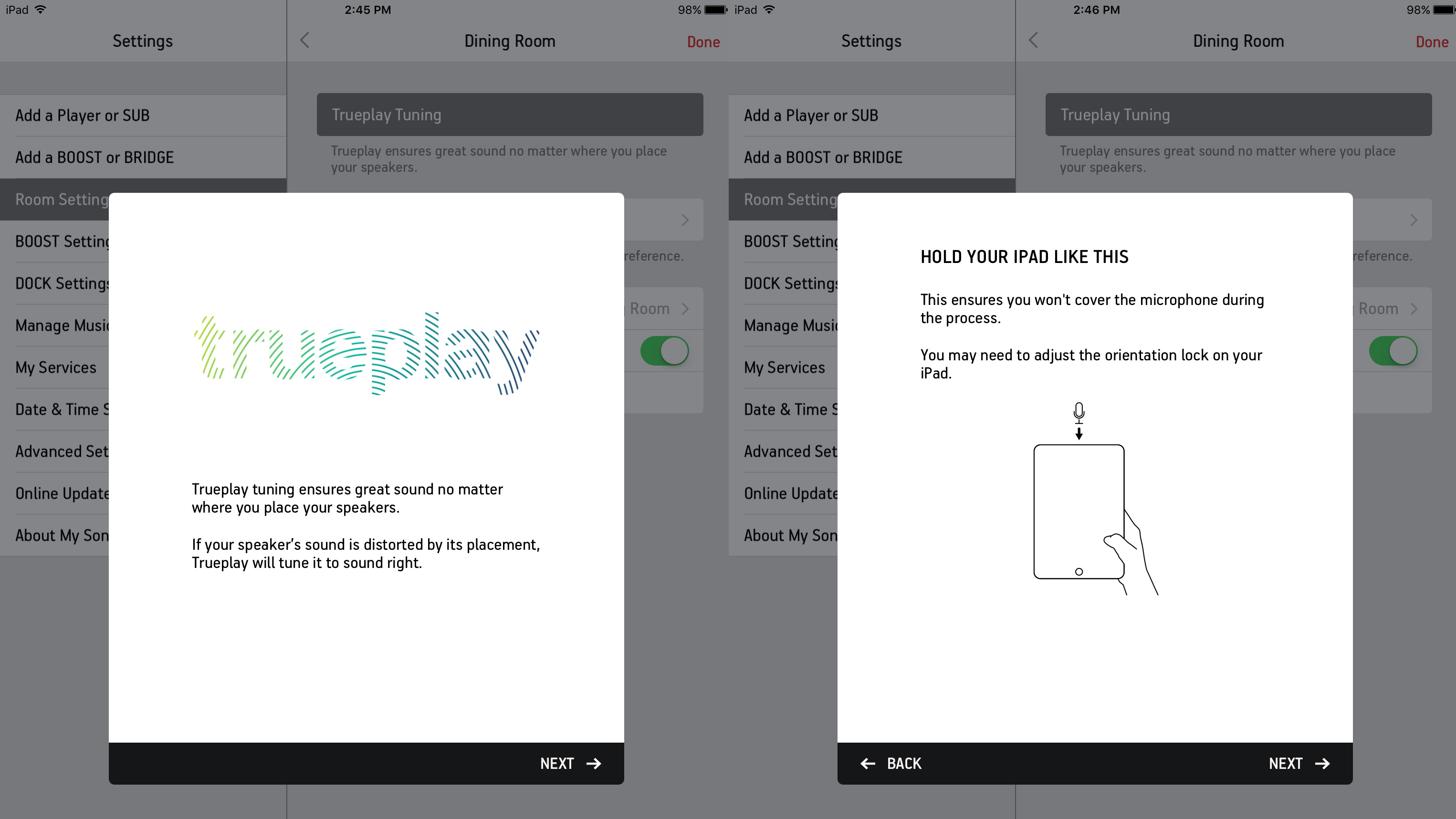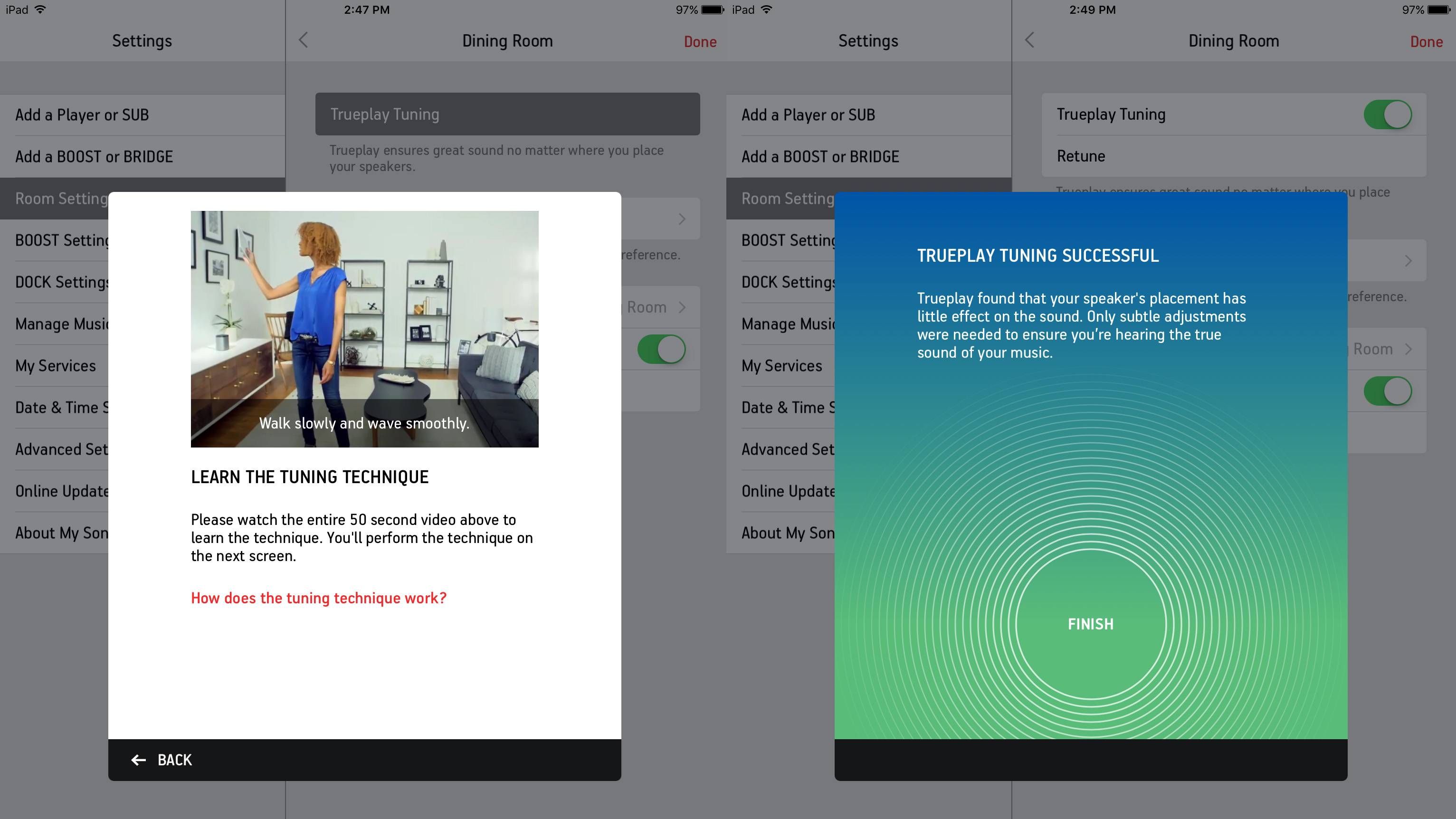Sonos Play:5 review: flagship speaker gets a major upgrade
Sonos big boy the Play:5 is re-imagined for a new era of streaming


-
+
Sleek design
-
+
Massive sound
-
+
Trueplay is impressive
-
-
App needs an upgrade
-
-
Side speaker legs protrude
Why you can trust T3
It's been nearly six years since Sonos launched the original Play:5, then called the S5. Since then the streaming market has become very crowded. Where it used to be that Sonos was the only company with any real worth bringing streaming to the masses, now Sony, Samsung, Bose, Denon, Pure and even Yamaha are offering up setups. Bluetooth streaming has matured but the Play:5 proves that Sonos is still king because of its unique closed and controlled streaming system.
Specs-wise, the new Sonos Play:5 is an upgrade to the original in every conceivable way. There is nothing here that was in the original. Each component has been tweaked and redesigned to make sure it suits the needs of the new crop of streaming stalwarts that are certain to come now that Apple has brought Apple Music to the iTunes masses.
Design
The chassis is a lot curvier than the original and the finish, although it is high-finished plastic, looks and feels almost ceramic. It comes in two colours, black and white but with each one the grill stays black. This is no bad thing, it marries up well with either colour and the design of the Play:5 would suit pretty much any room in your house.

Whip off the grill - actually, don't do that - and what you will find is an extra speaker from what was in the original Play:5. There is now an array of three 10cm mid-woofers on the bottom of the speaker and two 20mm tweeters above these. Rounding things off is a 22mm tweeter in the middle of the grill. Now, this innocent tweeter caused a whole host of problems in the development of the Play:5.
That's because nestled over the top of this tweeter and the grill is a Sonos logo tag. It needs to be there as it is the signifier for the middle of the touch controls that sit atop the Play:5.

These controls are simple, though you won't find directions on the casing. Essentially you have to swipe left for volume down, right for up and longer touch to play the next or previous song. Sonos has kept the controls this simple so that you don't end up getting saved in your bedroom because you accidentally spelled out SOS in Morse code on your device - its free from too much tapping and that is nothing but a good thing.
If you neglect the controls, then the Sonos app tells you now and again how easy it is to use the touch controls. This is a nice, er, touch.
Get all the latest news, reviews, deals and buying guides on gorgeous tech, home and active products from the T3 experts
But back to the logo tag. It is there because the designers battled hard for it. The engineers thought it would obscure the sound, so they came up with then ingenious idea of lasering 800 plus holes through it to make it as 'acoustically invisible' as the speaker grill, which has some 60,000 holes in it. We're glad they kept it as it looks great.

Performance
Sound-wise, the new Sonos Play:5 is as powerful as you might expect with all that horsepower behind it. When I originally heard the Sonos Play:5 back in September, I listened to a number of songs to test the low and high ends, using A$AP Rocky's bass-heavy L$D to trouble the lower frequencies (it sounded great, booming in fact) and The Weeknd's Earned It to tickle the tweeters. Again, the sound was fantastic - much louder and larger than the speaker system would have you believe by its looks.

Now I have had it in my home for a while, I've tested it some more and anything from acoustic folk (Iron And Wine's Our Endless Numbered Days sounded lovely) to bass-laden tracks such as Roots Manuva's Facety 2:11 sound clear, free from muddiness even when the speaker is turned up really loud. In fact, it is best when it is loud as puts the three mid-range drivers to good use.
The Sonos Play:5 can be paired with another Play:5 to offer up stereo sound. While a sole Play:5 manages to do this well thanks to the tweeter configuration (the left and right are in cones) and the array of mid-woofers, it sounds even better when paired.

You can also have the speakers in a vertical configuration - a sensor makes sure it knows which way it is up so the touch controls aren't confusing to use. One thing I would say about this - because it can be placed both horizontally and vertically, there are small feet that protrude out the side. It's not a massive issue, it's very subtle, but I did notice them.
Trueplay
What certainly isn't subtle is the new software update that is launching alongside the Play:5. Trueplay will soon roll out to all Play:1, Play:3 and Play:5 speakers and is a clever piece of technology which means it no longer matters where in the room you place your speaker, it will sound great.

The process takes around 45 seconds (and can be found on the iOS app and Sonos controller) and essentially involves you pacing the room while strange zapping noises are bounced off of your Sonos setup. Once configured, it will open up the Sonos sound even if your speaker is between the bread bin and the mixer in the kitchen.
You do feel a little silly using the configuration software - it's best done on your own with the curtains closed - but it really does make a difference to the sound.

Verdict
I have used the Play:5 for a number of weeks now and I still can't get over how good it sounds. It's a speaker that looks great and sounds even more impressive. Sonos has done well to make it as easy to possible to use - setup was minutes - and while it is more expensive than the what the original Play:5 originally cost - its available for around £425 and is available for pre-order now - audio-wise, it is a much better speaker.
And then there's Trueplay - even if you don't feel like upgrading just yet, this software will revolutionise your current Sonos setup for absolutely nothing.